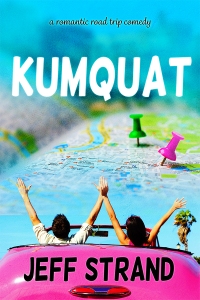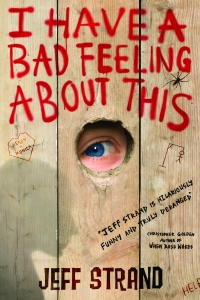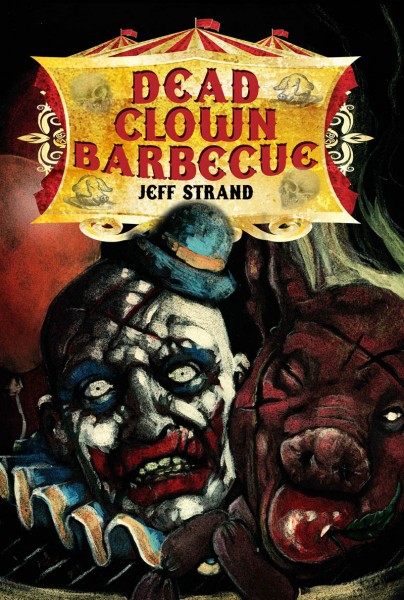I’ve never had a guest blogger here on my website, but when Jared Sandmann asked if he could do one, I thought “Free content! Woo-hoo!” I said it had to be funny, ‘cuz that’s the way we roll in these parts, so he contributed an essay on Humor and Horror. Ladies and gentlemen, boys and girls, madmen and madwomen, presenting…Jared Sandman!

Jared Sandman’s Blogbuster Tour 2011 runs from July 1st through August 31st. His novels include Leviathan, The Wild Hunt and Dreamland, all of which are available at
Amazon,
Barnes & Noble and
Smashwords. His next book, The Shadow Wolves, will be released in August. Follow him on Twitter (
@JaredSandman) and be entered to win one of several $25 Amazon gift cards. See rules at
www.jaredsandman.com for eligibility.
* * *
“The Yuk Factor”
Humor and horror are two sides of a double-edged sword, each equally pointed and capable of drawing blood when well used. Horror is more direct, like a fatal knife thrust, while humor takes an indirect approach. Humor’s lethality is comparable to death by a thousand cuts, shallow barbs that inflict massive damage through cumulative effect.
Horror, which is really another name for tragedy, has a storied kinship with comedy. My favorite writer is Robert Bloch. Bloch was the undisputed master of the pun, the twist ending, the gag-inducing gag. (If you doubt me, look no further than his contribution to Dark Forces, “The Night Before Christmas.”) Early in his career, Bloch worked as a stand-up comic and sold jokes to radio programs. Even William Peter Blatty, author of The Exorcist, wrote several satirical novels and comedy screenplays before working in the horror genre. Then there are those who wield the twin talents of writing and illustrating, such as Gahan Wilson or Edward Gorey, whose drawings add another layer of wit to the wicked.
Humor springs from the chasm between what one expects and what actually transpires. It shares with horror a need to subvert expectations. Both genres lampoon the sacred and the scared, poke fun at things others hold dear or hold at arm’s length out of disgust. If there can be no sacred cows for comedians, neither can there be any for horror writers.
People laugh at whatever frightens or confounds them. What elicits a gasp from one person produces a guffaw in another. These are reflexive reactions that can’t be stifled, two different types of emotional coping mechanisms: our fears parried through parody.
The quickest shortcut to make an audience care for a protagonist is to have that character crack wise. Nobody wants the comic relief to get killed, after all. (Of course this usually means the funniest person must die, as William Faulkner reminds us to kill our darlings.) When the two genres work in tandem, the effects can be greater than the sum of their parts. Movies like Ghostbusters or Shaun of the Dead garner cult followings because they appeal to double the demographics, horror fans and comedy lovers alike.
In horror fiction, the writer requires a certain level of atmosphere and dread to craft a memorable scene. He or she builds tension like a simmering pot of water set to boil. And a well-timed punchline at a particularly suspenseful moment in a horror movie will provoke thunderous laughter because the audience members crave a momentary lapse in their unease.
Unbeknownst to them, that same joke serves merely as misdirection. It’s in that instant, when viewers or readers drop their guards, that the real trap is sprung and something truly terrifying is let loose.





































































